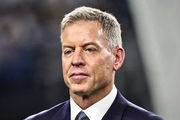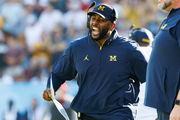

Tony Hawk is a skateboarding legend. Not only is he known for his incredible tricks on the skateboard, but Hawk is also a visionary investor and entrepreneur. He started his own skateboarding company called Birdhouse. While his legendary video game generates billions of dollars each year, he also earns through brand endorsements and revenues from his other ventures.
Watch What’s Trending Now!
In a recent podcast on YouTube, Hawk opened up about his early investments and the rollercoaster journey of building his empire. However, he also explained how one of his early investments made him go through a difficult phase.
ADVERTISEMENT
Tony Hawk’s early investments from skateboarding
When asked about his early investments, Hawk revealed that his father played a crucial role as a guide in financial conversations. At the tender age of 17, Tony Hawk wasn’t sure if investing in real estate was even possible, but with his father’s support, he took the leap. His father co-signed the papers, making it possible for Hawk to purchase a 4-acre property in Fallbrook. Excited about his new property, the skateboarder decided to build ramps on it, which took his skateboarding to a whole new level. It was a dream come true for him, but little did he know that owning and maintaining the property would eventually become a financial drain. In the early ’90s, skateboarding hit its slowest years, and Hawk’s income dropped significantly.
With a hefty mortgage and the costs of maintaining the property and ramps, he found himself struggling to make ends meet. While recalling his financial challenges in his early days, Hawk said, “I could barely afford my water bill.” Despite adversity, in 1992, he took a bold step and started his own skateboard company, Birdhouse, using the equity from the Fallbrook property as startup capital.
Top Stories
Update Announced on Josh Allen’s Bills Staying Near Brown University Amid Tragic Incident

2025 Vic PGA Championship: Prize Money, Winner’s Payout & More Explored

Forced to Leave FOX, Cowboys Legend Troy Aikman Says ESPN Is Like ‘U.S. Government’ & Clearly Distinguishes the Two Networks

Michigan Football Receives Disappointing Kenny Dillingham News on Saturday

$250M Michigan Booster Reveals More to Sherrone Moore Saga After Paige Shiver Confirms Police Visit

Army vs Navy: Why is U.S. President Donald Trump Attending the Game?

ADVERTISEMENT
ADVERTISEMENT
He eventually sold his Fallbrook property and moved back to his original house. Hawk became shrewd with his finances, cutting back on expenses, and taking on every random job that came his way to build his brand. From demo requests to becoming a consultant for commercials, Hawk worked tirelessly to make his mark in the skateboarding industry. Today his skateboarding company generates millions in revenue. However, he still remembers his team’s contributions and their hustle during the early days of Birdhouse.
The early days of Birdhouse
A legend in his own right, Hawk humbly acknowledges that Birdhouse’s success wasn’t solely his doing. He credits his team members, including Willy Santos, Jeremy Klein, Steve Berra, Ocean Howell, Andrew Reynolds, and Matt Beach, for playing a vital role in making the brand successful. During the brand-building days, Hawk wore multiple hats out of necessity–rider, team manager, owner, and tour manager. As the skateboarding industry was rapidly evolving, he had to adapt and juggle various roles to keep his brand at the forefront. Apart from Birdhouse, Hawk also owns Hawk Clothing and Blitz, which deals in skateboarding products.
ADVERTISEMENT
From his early investments and financial struggles to founding Birdhouse and managing a successful skateboarding brand, Hawk’s story is an inspiration to both skateboarders and entrepreneurs alike. Through hard work, determination, and a passion for his craft, Tony Hawk has amassed a fortune of around $140 million. He is still equally passionate about the sport and continues to mentor and help the next generation of skateboarders in order to help them reach great heights in the sport.
Watch this story: Tony Hawk Goes in Awe As Skateboarder Pulls Out an “Insane Trick”
ADVERTISEMENT
ADVERTISEMENT
ADVERTISEMENT
ADVERTISEMENT

